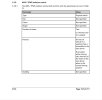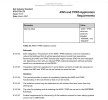Hi all.
I have quite a specific couple of questions I need clarifying and answering please.
It's with regards to FULL isolation of the TPWS.
The older version and the newer version.
On the older version, when you fully isolated the TPWS with the key you also isolated the AWS!
On the newer version, is this the same?
I understand, on the newer version there is the option to Isolate the AWS on it's own. But not on the older version.
. I'm asking about the other way around. When you isolate the TPWS, does it isolate the AWS on the newer version just like it does on the older version.
Thanks
I have quite a specific couple of questions I need clarifying and answering please.
It's with regards to FULL isolation of the TPWS.
The older version and the newer version.
On the older version, when you fully isolated the TPWS with the key you also isolated the AWS!
On the newer version, is this the same?
I understand, on the newer version there is the option to Isolate the AWS on it's own. But not on the older version.
. I'm asking about the other way around. When you isolate the TPWS, does it isolate the AWS on the newer version just like it does on the older version.
Thanks


